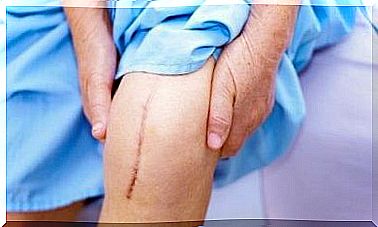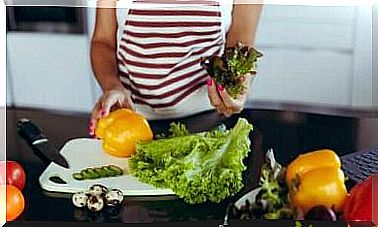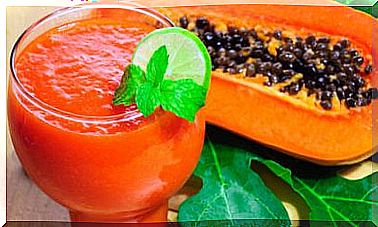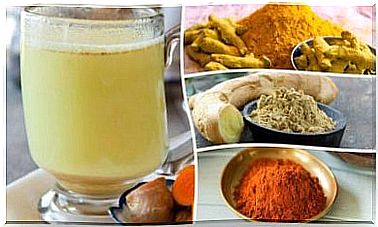Food Safety: Interview With Gemma Del Caño

Concern for health and well-being is growing. Also, we often hear about food safety. We want food to be of quality, have adequate nutritional value and offer us maximum benefits.
Added to this is the desire for variety, immediate availability and the ability to choose well. To do this, however, we must be informed and carefully evaluate what we put in the cart ; it is not enough to read what is written in large letters on the package.
Gemma del Caño talks to us about food safety
Graduated in pharmacy, with specialization in industrial pharmacy, master in biotechnology for food safety, science communicator and BRC (food safety) auditor, Gemma del Caño will help us to clarify some of the most common doubts in consumers.
Q. How would you define the term food safety in simple words?
It would be interesting to make a distinction between “food safety” and “harmlessness”, although the former term is commonly used to refer to the latter.
Food safety refers to the availability of food and harmlessness to the fact that the foods we consume are safe , i.e. not harmful to health . Usually, however, we talk about safety rather than harmlessness.
Advances in food security have saved millions of lives and this makes us feel safe when we go shopping. We know that we will not have a toxic infection, we will not find a foreign body or chemical contamination. Obviously , zero risk does not exist, but today we eat the safest foods in history.

Q. Do you think people are sufficiently familiar with the procedures of the food industry?
No, and the responsibility lies with the food industry which for years has not been transparent. On many occasions it has chosen to opt for disinformation to gain advantages.
This is what happened, for example, with additives. Any authorized additive is safe (which does not mean it is necessary). If we promote a product “without additives” as a good product, we let the consumer understand that the one with additives is bad, when it is not at all.
The problem is the product, not the additive. Some foods with additives are healthy (like canned legumes), while other products, even without additives, are a bad choice (like ultra-processed pastry).
Q. Who can you contact to fill your gaps? What do you recommend to the general public?
Food safety agencies, the European Food Safety Authority (EFSA) or the FDA in the US are reliable sources.
We need to escape from fake news or hoaxes that arrive on WhatsApp or Facebook. They misrepresent information or shamelessly lie to earn a few clicks.
Reality is much more boring than what some try to make us believe and fear sells. We shouldn’t believe the alarming theories. Instead, we should always go back to official sources. Right now there are many popularizers, including in the field of food safety, who are trying to dispel false myths.
D. Experts recommend reading the label for those who want to know what they are buying and consuming, and be aware. Many times, however, there is the doubt of not reading it correctly. What do you suggest?

The order of the ingredients always goes from the highest to the lowest. We should be able to identify the product we wish to purchase through the ingredient list.
If we read “cheese” and the ingredients are milk, salt, rennet and ferments, it is correct. If, on the other hand, the product appears to us as cheese, but other ingredients besides cheese appear on the label, we should be suspicious.
Let us not be convinced by the big letters on the packaging such as “contains vitamins” or “without palm oil”. Remember to always read the label, not the packaging. The label doesn’t lie. Large writings should not make us ignore small ones.
Q. So not all additives and preservatives are bad?
Additives are not negative. In fact, preservatives, emulsifiers, etc., improve the characteristics of the product and reduce food waste. It is true that other additives, such as sweeteners, are not necessary, but not toxic for this.
The same goes for flavor enhancers. Products with glutamate are controlled; on the other hand, a glutamate-free snack is often just as unhealthy as the products that contain it. The problem continues to be the product and not the additive.
D. Not all industrial products are bad? What are the points in favor to consider in order not to panic?
The food industry allows us to consume the products we want at the lowest price and when we want it. There are many correct foods produced industrially: frozen fish, legumes, pasta, wholemeal bread.
Just being industrial doesn’t mean they hurt. We simply have to know how to choose.
Q. Do you think parents should pass on the value of food security to their children?
It is essential, for several reasons. First of all, food safety begins in industries, but ends in our homes. Nearly half of all food-borne infections occur in the home.
Children should know how to handle foods to keep them safe. On the other hand, they should accompany us to the supermarket to learn that all foods are safe.
Q. In your opinion, what is the “life cycle” of myths about health and food?
Many myths come back recurrently and must be disproved over and over again. Videos such as those of the apple with plastic, in reality it is about edible waxes that protect against mold and bumps, or others about how the industry lies to us go viral several times a year, creating misinformation on the reality of food.
D. Being critical and aware of the choice of what we bring to the table every day is a concern or a relief? Why?

In reality it requires a sense of responsibility. We eat several times a day, we must be aware of something we do so often. But you have to use your head and not believe in false myths.
Reading the labels without letting ourselves be convinced by the “zero” or “without”, but by correct information apparently takes time, but only for the first time. Once we have chosen the right food for us, the next time we will go without fail and save money because we have already eliminated the superfluous products.
If we fill the bags with fresh food and choose the right ones, it will be a real relief, the guarantee of a healthy and safe diet.
Buy with awareness to eat better
For conscious shopping, it is important to learn how to read product labels and not limit yourself to information written in large letters on the packaging or advertising seen in the media.
Otherwise, not only do we not take home the most suitable product for us, but we lose the opportunity to understand what we are eating.
As Gemma del Caño assures, once the first effort is made, it will be easier to understand what to discard and what to put in the cart regularly. The question is to give us the opportunity to do this research and to rely on official information sources.









